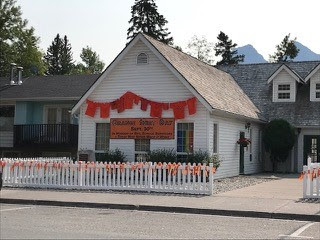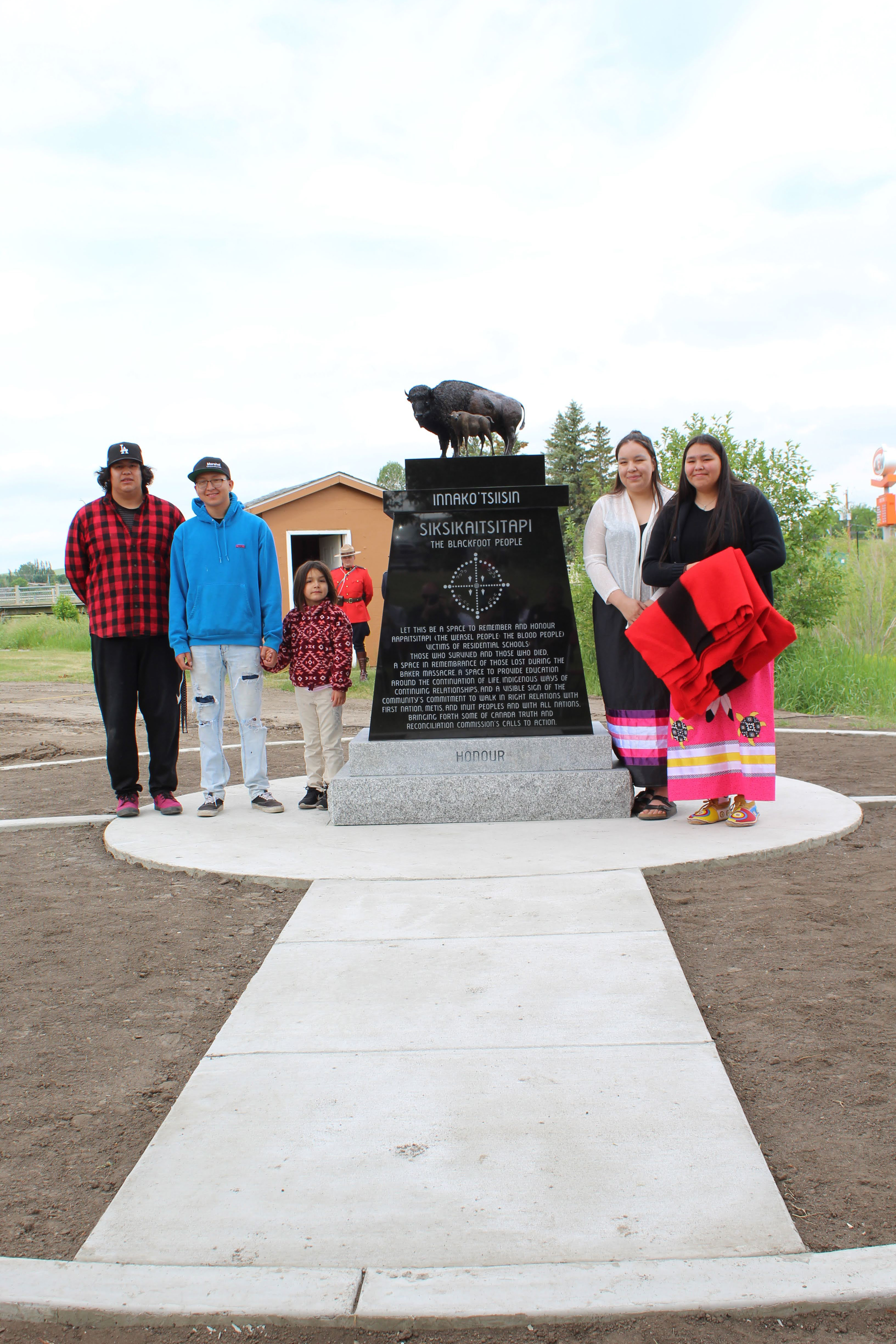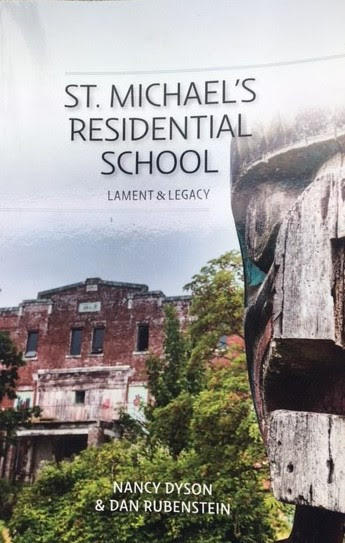Reconciliation and Indigenous Justice News from
The United Church of Canada |
|
Community Education for Reconciliation

Ralph Connor Memorial United Church in Canmore is on the lands of the nations who signed Treaty 7 in 1877. Its closest neighbours are the Stoney Nakoda Nation. Canmore is a full-fledged tourist town every weekend, and in September the church took advantage of its Main Street location to outreach to passersby about their work for right relations. Gloria Snow from Stoney Nakoda worked with them on the planning and program.
On Labour Day weekend the group engaged with 350 people, encouraging them to learn more about Orange Shirt Day and why there is now a National Day for Truth and Reconciliation. Some Indigenous people stopped to talk and shared their stories. The church continued the outreach every Sunday of the month. Organizer Mary Shearer noted that “kids often knew more than their parents, which is good sign.”
[Photo credit: Mary Shearer] |
|
New Video Resources
There are a number of important new video resources available for you to use in ongoing individual and community learning about historic and ongoing colonialism and its impact on Indigenous peoples. APTN Investigates opened its new season with a compelling two-parter. The first, Uncovering the Colonial Playbook, explores how Canada both perpetuates and dismisses colonialism, and the second, Unlocking the Indigenous Toolkit, looks at Indigenous tools of resistance and resurgence. Moderator Richard Bott appears briefly in episode 1, discussing the United Church’s role at Edmonton residential school.
There are also two new webinars from the United Church available on United-in-Learning. You can learn more about the Sixties Scoop and current activism in Becoming Nakuset: The Story of a Sixties Scoop Survivor. And in Indigenous Children Then, Now and Tomorrow: A Panel Discussion for Orange Shirt Day, a powerful group of Indigenous activist trace the path from residential schools through the 60s Scoop, Millennial Scoop, and contemporary discriminatory treatment of Indigenous children in Canada. |
|
Monument Installation at Riverside Healing Garden, Cardston, Alberta

The United Church’s Justice & Reconciliation Fund was pleased to contribute to the creation of a monument, led by high school students, to commemorate the victims of residential schools and of the Baker Massacre of 1870. It features a design by student Cashius Hungry Wolf.
This project was supported by St. Andrew's United Church, Cardston, AB. With respect to the memorial’s significance, Rev. Lois Punton writes, “We live together on this land and in our community. It is vital that we not only acknowledge this difficult and traumatic part of history but that we also remember fully the hard truths of the past so we can learn to move forward in positive, hopeful ways. As we listen to and speak with one another, holding story and memory, we do so in an effort to build understanding, to follow the path of healing, and create strong bonds with each other to build a fuller, richer community from which we will all benefit, living as neighbours and friends, caring for each other along life's journey. This monument and the garden that will surround it offer a visual reminder, to the church and the whole community, of both the work of reconciliation that lies before us and of the hope and promise this path holds. It is in that hope and promise that we continue the journey of reconciliation, here and across our church and country.”
Project leaders shared an article about the monument’s unveiling ceremony.
[Photo: Riverside Healing Garden Credit: Rev. Lois Punton] |
|
St. Michael’s Residential School: Lament & Legacy

Two former staff of Alert Bay Student Residence (formerly the St. Michael’s residential school) in British Columbia have published the story of their time at the residence in 1970. Nancy Dyson and Dan Rubenstein were hired as child care workers, and had no prior knowledge of the residential school system. In their published reflections, rare from former staff, Nancy and Dan take us into the residence to experience from their young adult eyes what life was like in a residential boarding institution for Indigenous children. Through them we also experience the Indigenous community celebrating the historic raising of a totem to memorialize Mungo Martin and an accompanying potlach. We listen as community members react to the infamous 1969 White Paper during a visit from then federal Minister Jean Chretien. We meet parents whose children were housed at the residence. We observe efforts by a local United Church minister to get parishioners to sign a petition drafted with the local First Nation seeking federal inspection of the residence. And, we see Nancy and Dan struggle with their growing awareness of the residential school system.
Using excerpts from the Truth and Reconciliation Commission’s report, they share their story as a witness and contribution to the journey of truth telling, healing, and reconciliation. St. Michael’s Residential School: Lament & Legacy is available by direct order from Ronsdale Press and through major book retailors. Dan and Nancy may be contacted through their website.
[Photo: Don and Nancy’s book. Credit: Lori Ransom] |
|
| Donate to The United Church of Canada and help fund life changing work around the world! |
|
|
|




No comments:
Post a Comment